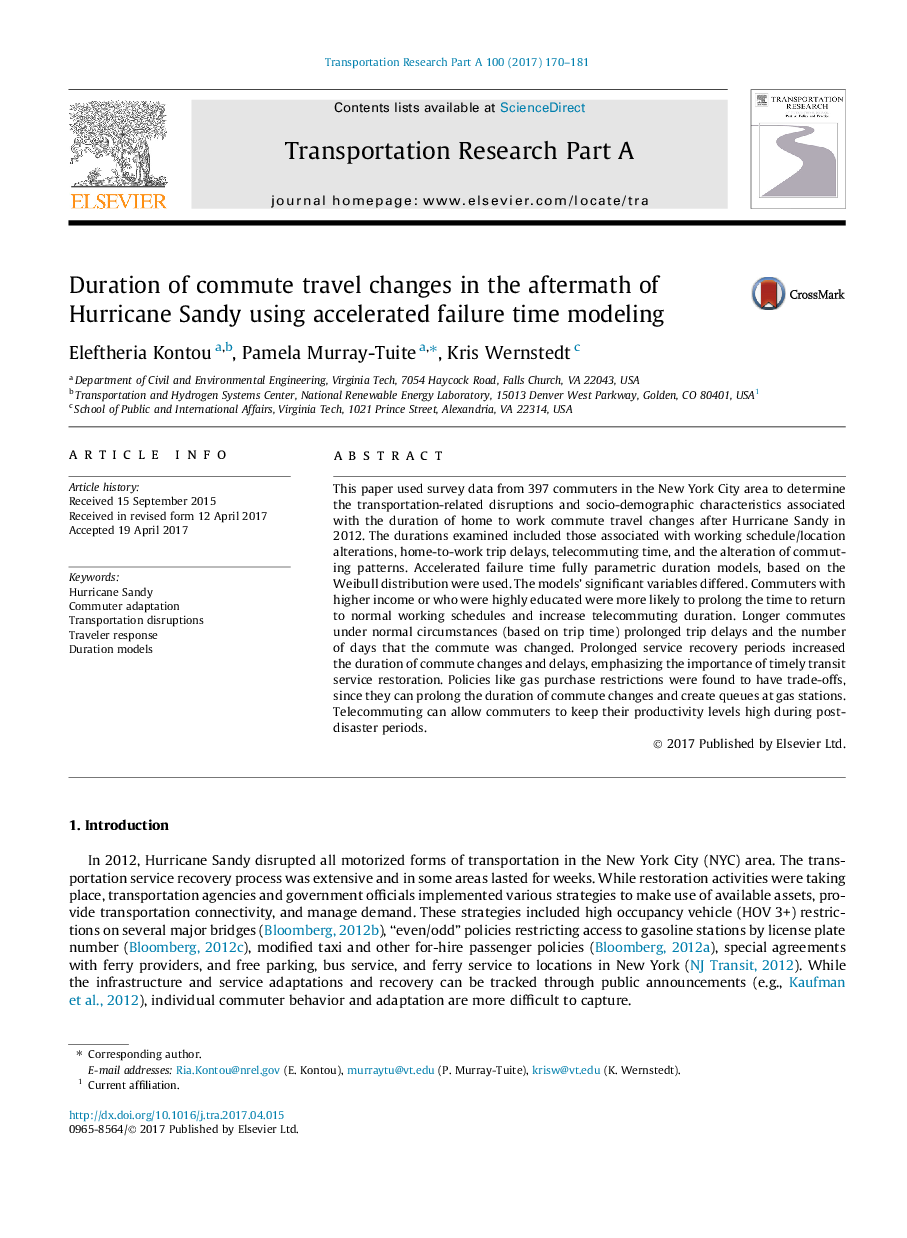| Article ID | Journal | Published Year | Pages | File Type |
|---|---|---|---|---|
| 4928970 | Transportation Research Part A: Policy and Practice | 2017 | 12 Pages |
Abstract
This paper used survey data from 397 commuters in the New York City area to determine the transportation-related disruptions and socio-demographic characteristics associated with the duration of home to work commute travel changes after Hurricane Sandy in 2012. The durations examined included those associated with working schedule/location alterations, home-to-work trip delays, telecommuting time, and the alteration of commuting patterns. Accelerated failure time fully parametric duration models, based on the Weibull distribution were used. The models' significant variables differed. Commuters with higher income or who were highly educated were more likely to prolong the time to return to normal working schedules and increase telecommuting duration. Longer commutes under normal circumstances (based on trip time) prolonged trip delays and the number of days that the commute was changed. Prolonged service recovery periods increased the duration of commute changes and delays, emphasizing the importance of timely transit service restoration. Policies like gas purchase restrictions were found to have trade-offs, since they can prolong the duration of commute changes and create queues at gas stations. Telecommuting can allow commuters to keep their productivity levels high during post-disaster periods.
Keywords
Related Topics
Physical Sciences and Engineering
Engineering
Civil and Structural Engineering
Authors
Eleftheria Kontou, Pamela Murray-Tuite, Kris Wernstedt,
